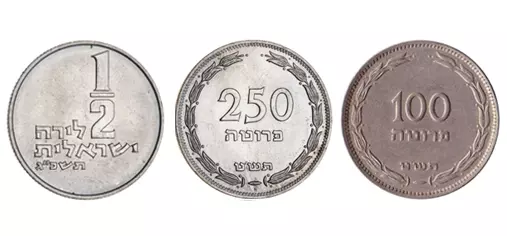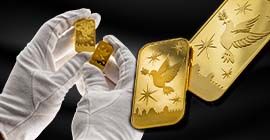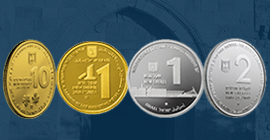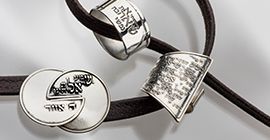The Wonderful World Of Collectibles: A Brief History Of Numismatics
Collecting coins and medals has accompanied mankind for thousands of years. Large and small collectors possess a unique, and sometimes extremely rare, selection of properties with depth and presence from distant times and places. Of course, coin and medal collectors also benefit from the increase in their value, thanks to the rise in the price of the precious and rare metals from which they are made and due to increasing demand from other collectors. In this article we will get to know this wonderful world of Numismatics, we will understand its basic principles - and we will also hear some incredible stories about coins worth millions.
Numismatics in History
Numismatics is the study or collection of coins, currency, medals, tokens and other money related objects.
Coin collection began as soon as man discovered the gold and silver metals and understood the power and usefulness of coins as a means of payment. Rulers and kings issued coins as an expression of their political authority, in order to develop trade in their countries and for the benefit of economic growth. In doing so, they created assets of cultural and historical value, which aroused interest among those who recognized the magical qualities inherent in them. Throughout the ages, coins have become impressive symbols - small objects with tremendous significance. They document and commemorate fascinating events, places and stories, and carry with them a spectacular and one-off aesthetic.
Augustus Caesar is considered the first coin collector. The emperor collected coins and gave them as gifts during his reign at the beginning of the first millennium. More than a thousand years later, in the Renaissance era, ancient coins from Greek and Roman times were already historical assets, and their collection became a hobby and even a major occupation of popes, kings and lovers of culture and art. The first book on coin collecting was written in the 16th century, and in those years the understanding sharpened that ancient coins are a first-rate means of getting acquainted with past life and that these are valuable objects.

100 Pruta from 1949, 250 Pruta from 1949, Half an Israeli Pound from 1963
The dollar that disappeared in Egypt and was sold in millions
Since then, countless collections of coins have been created around the world, some of which have gained real fame. One of the most exciting collections was created in the 20th century by King Farouk I of Egypt. King Farouk held a rich collection of thousands of coins, and was also an avid collector of other objects, such as diamonds, stamps, and Faberge eggs. These marvelous properties have become a center of pilgrimage for collectors from all over the world. The collection, considered one of the largest and most significant in history, was disbanded and sold after the revolution that ousted the king from power in 1952. Despite this, the plots continue to this day.
The stories associated with Farouk's collection sound like fairy tales or thrillers - and express the abundance of magic that lies within this world. The most striking story of all is of a particularly rare coin, $20 dollar Double Eagle in gold, minted in 1933. That same year, as part of the fight against the Great Depression, the United States government nationalized all the gold in civilian possession. Since the coin had not yet been distributed to the public, it was decided to shelve it and melt the tokens back into gold. However, some coins slipped and reached the market, apparently illegally. After it was discovered that King Farouk was holding one of the coins, the Americans demanded that he return the coin but it disappeared with the revolution in Egypt.
40 years later, the coin was discovered in the hands of a coin collector arrested by the Americans. After a long investigation, it was finally decided to reuse the coin: first make it legal and then sell it at an auction - the proceeds of which would be divided between the American authorities and the collector. In 2002, the Double Eagle gold coin sold for a record $ 7 million - one of the highest ever paid for a coin

$20 Double Eagle Gold Coin from 1993. Source: National Numismatic Collection, National Museum of American History
Coin-collecting experts will not be surprised that in addition to the premium of Sotheby's investment house that managed the sale, the sum of millions also includes $20 - which is the face value of the unique dollar currency. Although ostensibly a paltry sum in relation to the whole transaction, it reflects an essential aspect in collectible coins. Later in the article we will understand a little more the meaning of face value versus collector value.
What is numismatics?
Over the years, the theoretical practice of collecting coins developed, and in the 19th century the concept of numismatics (Numismatics, based on the ancient Greek word for coin) was coined. Numismatics incorporates everything related to the research and collection of coins, banknotes and other objects that are used as a means of payment and trading, including various tokens and even stocks and bonds. Numismatic associations have been established in various countries, and rich and unique coin collections have been given the status of archeological assets displayed in museums and researched in universities.
A collection of coins or banknotes is first and foremost a unique, and sometimes extremely rare, selection of objects with specific looks and textures, which bring with them a depth of time and space, stories from around the world and instructive human history. The coins teach their observers about different areas of human culture, history, geography and more. Collection owners who have invested in the development, organization and preservation of their assets, have of course also benefited from the accumulation and increase in value of the rare treasures they have achieved.
Many museums around the world hold huge numismatic collections. The largest collection is currently housed at the American National Museum in Washington, D.C., with 1.6 million items, including rare coins from the early days of the United States such as a silver metal coin minted in 1804. Other notable collections are on display at the Hermitage Museum in St. Petersburg and the British Museum in London, with about a million items in each.
Prominent private collections have evolved over the years in the United States, including the Eliasberg Collection, established by the Baltimore businessman who managed to obtain most of the American coins issued from the late 19th century to the 1970's; And the Ford Collection (John J. Ford Jr.), created by one of the most prominent activists in the American numismatic community - but sold at auction after his death.
Another fascinating collector's story is related to the ever expensive transaction for the sale of a coin, which took place in 2013. The $1 Flowing Hair coin - which was the first dollar coin issued by the federal government in the United States in 1794 - sold for a fantastic $ 10 million. The coin is made of 90% silver and 10% copper. On the obverse is a figure with long hair symbolizing freedom, and on the reverse, an illustration of an eagle

Flowing Hair Dollar, first issued by the US Federal Government in 1794. Source: National Numismatic Collection, National Museum of American History
As early as the 19th century, Flowing Hair was considered a rare and expensive item. There are probably only about a hundred copies of it today, and the item sold at a record price to a company that collects antique coins is the best preserved among them. "We felt in our hearts that this coin would be the first to cross the $ 10 million mark at auction, and we were willing to pay much more to purchase this unique piece of history," Legend Numismatics officials said after purchasing the coin for their collection.
What is a collector's value?
In the story about King Farouk and the rare Double Eagle coin, we described how as an integral part of the expensive deal to sell the coin, its face value, $20, was also included. This was an essential point, since otherwise the currency stored would not have been legal currency. We will now understand a little more in depth how the value of collectible coins is determined - which make up the features of a regular coin with the qualities of a rare asset.
The value of collectible coins consists of three layers:
- The face value of the coin (for example, $20 or NIS 2).
- The value of the metal from which the coin is made (usually gold or silver).
- Collector (or numismatic) value derived from the unique features of the coin or the story associated with it.
Thus, if the price of metal soars, as is usually the case with gold - a rare and valuable asset that has proven its exclusivity for thousands of years - the value of the coin will climb accordingly. At the same time, if the currency accumulates a special collector value, its value will soar to extraordinary heights. Collector value is usually created because of the historical connection to the place, event or special character, rarity and mistakes in the production process that give a special look.
A key factor influencing collectible value is the degree of rarity. If a limited quantity has been issued and there is a story and aura behind the coin, its value can rise twice, five times and even more, above the value of the metal from which it is made.
On the website of the Israel Coins and Medals Corporation (ICMC), you can find, for example, a coin commemorating the 50th anniversary of the Israel Museum. The coin was issued five years ago and only 589 copies were made of it, and its value is now almost 20,000 shekels - more than three times the value of the gold from which it is made.
The historical treasures of Israel Coins and Medals Corp.
In this article we have been introduced to the wondrous world of numismatics and how ancient and new coins become objects that gain symbolic and economic value. Alongside the coins, central banks around the world, as well as the Bank of Israel, issue medals that are made of precious metals and have unique and artistic decorations. Compared to coins that carry a face value, medals carry an aesthetic, historical and symbolic charge - but without a face value.
The Israel Coins and Medals Corporation was founded in Israel in 1958 by the then Prime Minister, David Ben-Gurion. The corporation was established with the aim of commemorating unique events, personalities and elements that characterize Israel and the Jewish people - on coins and medals. About a decade ago, the state-owned company was acquired by the G.R.A.S. Design and Combinations Ltd., which has been operating it ever since, subject to an agreement with the Bank of Israel and in accordance with Ben-Gurion's vision.
For more than six decades, the Israel Coins and Medals Corporation has exclusively marketed the hundreds of coins issued by the Bank of Israel, including series that have gained a world renowned name: the "Biblical Art" coins, personalities in Israel, Independence Day coins and the "Jerusalem of Gold" bullion coins series. The corporation designs, manufactures and markets official state medals, and in addition also offers for sale a unique series of numismatic bullion made of pure gold or pure silver depicting sites, landscapes and symbols from Jerusalem and the land of Israel. On the company's website you will find the latest coins and medals, alongside a huge selection of older coins issued over the years.
"Biblical Art" Series Israel Coins and Medals Corporation website
Coin and banknote collectors can find real treasures on thecorporation's website. A rich and unique selection of coins and medals related to Israel, some of which are especially rare. For example, a 50 Pruta note from the first series of the Bank of Israel issued in 1952, currently offered for sale for NIS 8,000.
One of the treasures kept in the Corporation's vault dates back to 1977. In honor of Egyptian President Anwar Sadat's visit to Israel, the company issued a special medal at the request of then Knesset Speaker, Yitzhak Shamir, a special medal that was awarded to President Saadat at the Knesset. The medal was struck in gold with a weight of 3 ounces and in a mintage of two single medals only. The second medal is kept by the corporation and its value, if it goes up for auction, would be estimated at tens of thousands of dollars or more.
The unique inventory on the corporate's website is updated every day. Werecommend you to follow the accessible information and current publications and continue to discover the wonderful world of collectibles in Israel and around the world.




















